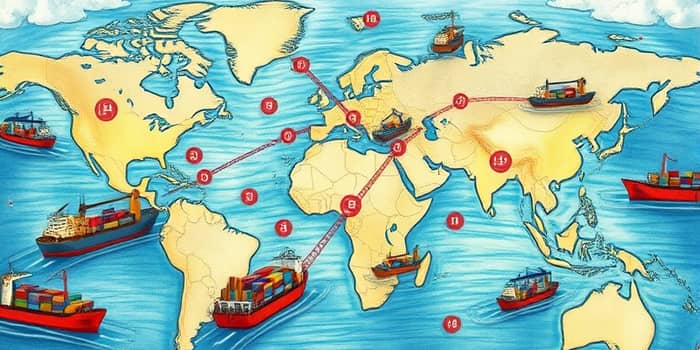
In an era defined by shifting alliances and geopolitical uncertainties, companies worldwide are accelerating efforts to reinforce the arteries of global commerce. Against a backdrop of rising conflict, trade disputes, and regulatory complexity, supply chains are undergoing profound transformations to safeguard continuity and foster resilience.
Supply chain upheavals have become an almost constant challenge, with organizations bearing the weight of frequent delays and escalating costs. The annual cost of disruptions now approaches $184 billion, a staggering figure that underscores the economic toll of instability. Nearly 80% of firms encountered at least one major disruption in the past year, and 22% of European shipping customers reported over 20 disruptive incidents, according to Maersk’s 2024 survey.
Beyond direct financial losses, disruptions extend product delivery times by over 20% since 2020 and contribute an estimated 0.7 percentage points to global inflation through freight rate spikes. Small and mid-sized businesses are particularly vulnerable, with 60% reporting revenue losses of up to 15% due to shipment delays.
While the pandemic exposed vulnerabilities, recent geopolitical tensions have intensified pressure on cross-border flows and sourcing networks. Key instability drivers include:
Moreover, the average geopolitical distance of trade has contracted by 7% since 2017, signaling a broader shift toward regionalized trade and shorter supply lines. As companies seek to mitigate exposure, they must balance cost-efficiency with strategic security.
In response to mounting pressures, organizations are reengineering their supply strategies around core resilience principles. Five critical tactics stand out:
These measures demand substantial capital and talent. Digital transformation efforts, for instance, hinge on recruiting skilled professionals to deploy end-to-end automation and artificial intelligence solutions. Companies that master these capabilities can move from reactive firefighting to proactive resilience building.
Corporate leaders are taking note. In the United States, 71% of CEOs plan significant supply chain alterations within the next three to five years, driven largely by trade uncertainties. This strategic pivot emphasizes reliability over lean cost models, marking a departure from the traditional focus on near-zero inventory.
Looking ahead, executives anticipate persistent inflationary pressures, ongoing economic uncertainty, and further geopolitical volatility. To navigate this landscape, many are embracing scenario planning and regional diversity, preparing for multiple plausible futures rather than banking on a single outcome.
Governments are also stepping in with stricter transparency and environmental regulations, particularly in the European Union, where new directives mandate detailed disclosures on sourcing and carbon footprints. These policies will shape how companies structure networks and report performance to stakeholders.
As supply chains evolve, one truth stands out: resilience is no longer optional. Organizations that invest in adaptable infrastructures, digital innovation, and diversified partnerships gain a competitive edge and the confidence to weather future shocks.
Embracing a mindset of continuous improvement, leaders can foster cultures that value agility, collaboration, and long-term strategic readiness. By integrating advanced technologies, balancing geographic risk, and maintaining strong contingency reserves, companies can turn disruption into opportunity.
Ultimately, the companies that thrive will be those that view supply chain design not as a cost center but as a strategic asset—ever ready to pivot, respond, and grow in the face of geopolitical tensions.
References













